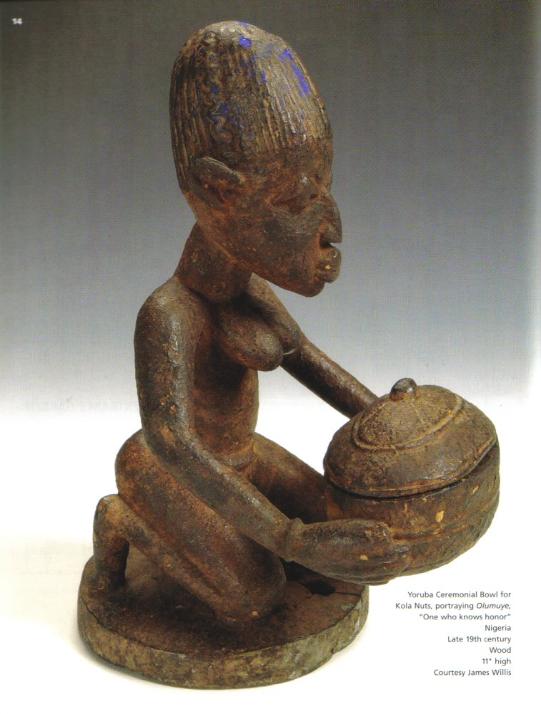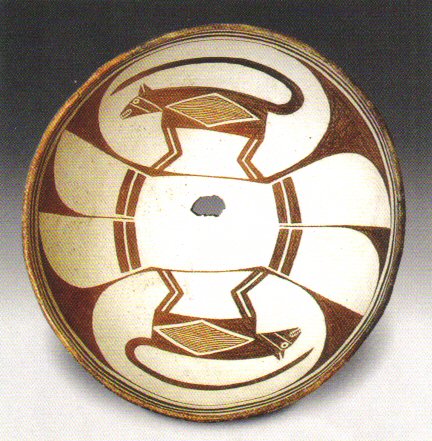|
| The object above was the first one in the exhibit. Yoruba ceremonial bowl for kola nuts, portraying Olumuye, "One who knows honor" Nigeria - Late 19th century - Wood - 11" high Courtesy of James Willis (Asking price on this piece was $18,000.00) |
|
|
| Female Effigy (for Ritual Substances?) Cameroon Grasslands Early 20th century Gourd, ndop cloth, trade beads and buttons, animal hair 11.5" high Courtesy Andres Moraga |
|
|
| Angami Hip Basket with Ceremonial Tail Naga Hills, Northeast India Early 20th century Bamboo, orchid stems, plant fibers, hair 13.5" long Courtesy Cathryn Cootner |
|
|
| Kuba Moon-Shaped Box for Camwood Powder D.R. Congo Early 20th century Wood 13" long Courtesy Andres Moraga |
|
|
| Ceremonial Drinking Vessel, Qero with Kantu flower motifs The Andes Spanish Colonial Era (Early 18th century) Painted Wood 7.5" tall Courtesy Robert Morris |
| Ceremonial Grease Bowl Northwest Coast, Canada Late 19th/early 20th century Wood (cedar?) with native fiber repairs 14" long Courtesy Dave and Nancy DeRoche |
|
|
| Medicine calabash container - Tanzania "These objects were used to hold medicine. They were traditionally used by the traditional healer to contain either liquids or powders that were then used during the healing ceremony. It was a tradition in Tanzania to finely carve to tops of the containers which then gave the container more person importance and made it possible to directly link the piece to a certain tribe and region mostly by the shape of the head and head style on the stopper. Courtesy - Bryan Reeves (Tribal Gathering London) |
| Bowl with Coatimundi Imagery Mimbres Culture, 1000-1150 AD New Mexico Painted ceramic 12.5" diameter Courtesy Christopher Selser |
|
|
| Ritual Gourds Ethiopia and Cameroon 20th century left: 11" diameter center: 18" high right: 11" high Courtesy Andres Moraga |
| CLICK HERE to see the Tanzanian calabash medicine containers in the Geller Collection, as well as other examples. |









